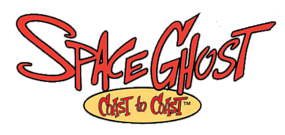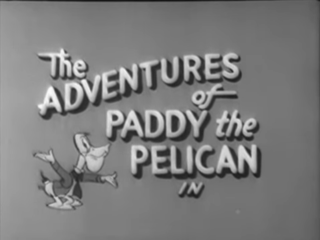Animation in the United States in the television era was a period in the history of American animation that slowly set in with the decline of theatrical animated shorts and the popularization of television animation that started in the late 1950s, reached its peak during the 1970s, and ended around the mid-1980s. This era is characterized by low budgets, limited animation, an emphasis on television over the theater, and the general perception of cartoons being primarily for children. Due to the perceived cheap production values, poor animation, and mixed critical and commercial reception, the era is generally looked back upon negatively by critics and animation historians. The television animation of this period is often referred to as the dark age of American animation, while the theatrical animation from the time is sometimes referred as the bronze age.
An animated series is a set of animated television works with a common title, usually related to one another. These episodes should typically share the same main heroes, some different secondary characters and a basic theme. Series can have either a finite number of episodes like a miniseries, a definite end, or be open-ended, without a predetermined number of episodes. They can be broadcast on television, shown in movie theatres, released on the internet or direct-to-video. Like other creative works, animated series can be of a wide variety of genres and can also have different target audiences: both males and females, both children and adults.

Courage the Cowardly Dog is an American animated comedy horror television series created by John R. Dilworth for Cartoon Network. It was produced by Dilworth's animation studio, Stretch Films. The eponymous character is a dog who lives with an elderly couple in a farmhouse in the middle of Nowhere, a fictional town in Kansas. In each episode, the trio is thrown into bizarre, frequently disturbing, and often paranormal or supernatural adventures. The series is known for its dark, surreal humor and atmosphere.

Space Ghost Coast to Coast is an American adult animation created by Mike Lazzo for Cartoon Network and first broadcast in 1994. It takes the form of a surreal parody of talk shows, hosted by a reimagined version of the 1960s Hanna-Barbera cartoon character Space Ghost. It incorporates surrealism and non-sequitur humor.

Amy Winfrey is an American animator, screenwriter, songwriter, director and voice actress. She is best known for creating the web series Making Fiends that was later picked up by Nickelodeon in 2008, and for directing several episodes of BoJack Horseman, including "The View From Halfway Down" and "Free Churro", which were each nominated for a Primetime Emmy Award for Outstanding Animated Program at the 71st and 72nd Primetime Creative Arts Emmys.

Josie and the Pussycats is an American animated television series based upon the Archie Comics comic book series of the same name created by Dan DeCarlo. Produced for Saturday morning television by Hanna-Barbera Productions, 16 episodes of Josie and the Pussycats aired on CBS during the 1970–71 television season and were rerun during the 1971–72 season.

Warner Bros. Animation Inc. is an American animation studio which is part of the Warner Bros. Television Studios, a division of Warner Bros., which is a subsidiary of Warner Bros. Discovery and serves as the animation division and label of Warner Bros.

The Tom and Jerry Comedy Show is an American animated television series produced by Filmation for MGM Television featuring the popular cartoon duo Tom and Jerry. The show first aired on September 6, 1980 on CBS and continued until December 13 the same year. Its episodes were eventually added to syndicated Tom and Jerry packages in 1983. Episodes of the show also occasionally appeared on Cartoon Network and Boomerang.

KARD is a television station licensed to West Monroe, Louisiana, United States, serving the Monroe, Louisiana–El Dorado, Arkansas market as an affiliate of the Fox network. It is owned by Nexstar Media Group, which acquired the station in 2003 as part of its purchase of Quorum Broadcasting. Nexstar provides certain services to El Dorado–licensed NBC affiliate KTVE through a local marketing agreement (LMA) with Mission Broadcasting. Both stations share studios on Pavilion Road in West Monroe, while KARD's transmitter is located in Columbia, Louisiana.
The Amazing Adrenalini Brothers is a Flash animated television series created by Dan Chambers, Mark Huckerby, and Nick Ostler. Starting off as online shorts in 2002, it was eventually commissioned as a full series by CITV and Cartoon Network in the United Kingdom, S4C in Wales, YTV and VRAK.TV in Canada. It is an international co-production between UK studio Pesky and Studio B Productions in Vancouver, British Columbia. A total of 26 episodes were produced.
David Wise was an American television and animation writer, tutored by writers such as Ursula K. Le Guin, Frank Herbert, Harlan Ellison and Theodore Sturgeon whilst attending the Clarion Workshop.

Carter Country is an American sitcom that aired on ABC from September 15, 1977 to August 23, 1979. It starred Victor French and Kene Holliday. A young Melanie Griffith appeared in two episodes.
The Big World of Little Adam was a series of television cartoons that debuted in syndication in 1964.
Robert D. Buchanan is a creator of several animated features in the 1950s and 1960s. He joined Soundac following the departure of Bobby Nicholson, who formed the company in 1951. Buchanan relocated Soundac from its original location of Buffalo, New York to Miami, Florida in 1955; he maintained a sales and distribution agent, Richard H. Ullman, in Buffalo through the late 1950s.

The Adventures of Paddy the Pelican is an American animated television series that debuted on local stations in Chicago during the 1950s. It is exceedingly rare, but has gained some fame for appearing on Jerry Beck's Worst Cartoons Ever. On the DVD, Beck states that he has not found any evidence that this particular animated adaptation was aired on TV, although there is evidence that the Paddy the Pelican character began in 1950 as a local TV puppet show on Chicago's WENR-TV, with Helen York and Ray Suber as puppeteers.

"Rude Removal" is a cartoon episode originally produced in 1997 for the animated television series Dexter's Laboratory for Cartoon Network. It was intended to air as part of the second season, but was left unaired due to the characters swearing even though the swear words were censored. In the segment, Dexter and Dee Dee are accidentally split into two pairs, a polite British accented pair and a rude New York accented pair, with the latter depicted as using profanity with bleep censorship. The segment was only screened at some animation festivals before finally being released online by Adult Swim on January 22, 2013.

Cartoon Hangover is a Frederator internet television channel and adult animation division, part of the YouTube Original Channel Initiative, launched in February 2012.
Doctors' Private Lives is a 1978 American made-for-television drama film starring John Gavin, Donna Mills, Ed Nelson, Barbara Anderson, and directed by Steven Stern. It was broadcast on ABC on March 20, 1978.

Lucas the Spider is an animated character created by animator Joshua Slice, named after and voiced by his nephew. Lucas is based on a jumping spider and has starred in multiple short YouTube videos between 2017 and 2019.

Jellystone! is an American animated comedy television series developed by C. H. Greenblatt for HBO Max. The series is produced by Warner Bros. Animation and features reimagined versions of various characters by Hanna-Barbera. It premiered on July 29, 2021.













